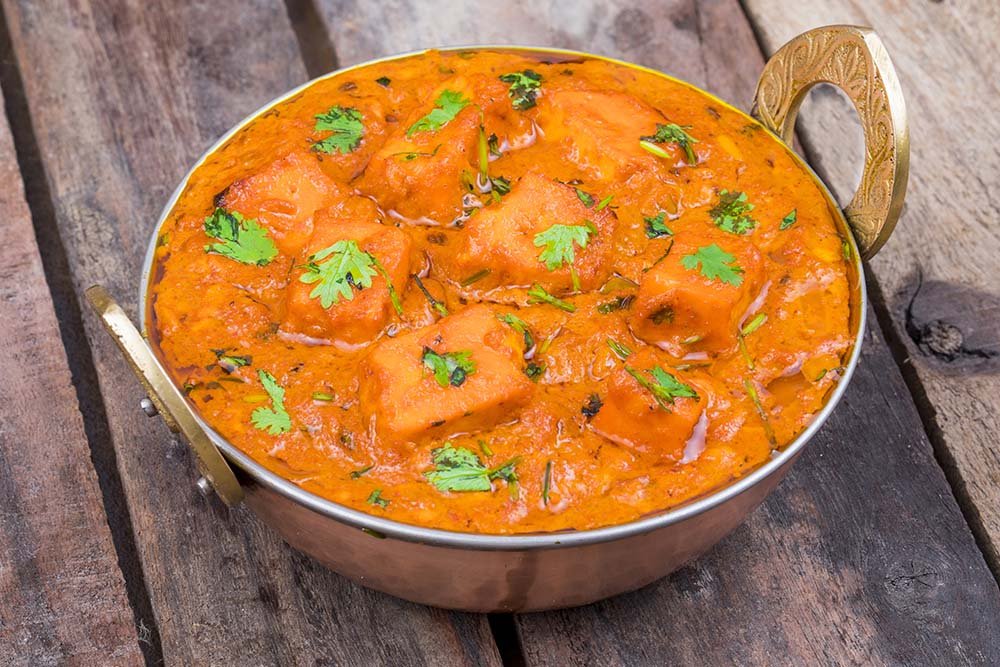Origins of the Chicken Tikka Masala and Other Facts about It
There's nothing quite like a platter of steaming hot chicken tikka masala. This world-famous dish, with several regional variants, can be found in Indian restaurants worldwide. Despite its contentious roots, the creamy, spicy curry and delicate chicken may be enjoyed by anybody, everywhere. So, what is the backstory of this famous entrée? Let us begin by delving into its history.
The Story behind the Chicken Tikka Masala
As previously stated, the creation story of chicken tikka masala is as elusive as legends. Many believe it originated from the South Asian community in Glasgow, Scotland, as it is widely regarded as the national dish of the United Kingdom, incorporating both the islands' cosmopolitan and historical past.
However, there is substantial disagreement on this subject. The dish's original origins may never be entirely understood due to its difficult-to-trace history, widespread acceptance, and variation in preparation.
The Ali family's narrative is essential to understanding the history of chicken tikka masala. According to legend (and the story is being repeated by family members today), on a dark and stormy Glasgow night in 1971, an off-duty bus driver stopped at a local Indian restaurant for a plate of chicken curry. The chef, Ali Ahmed Aslam, presented his food, but the bus driver was dissatisfied and returned it because it was too dry.
In a pinch, Ali moistened the dish with what he had on hand: a boiling, creamy tomato soup. The bus driver was so pleased with the new dish that he frequently visited for years, bringing friends and relatives to see Ali's new work. As a result, the chicken tikka masala was formed.
Of course, others question the validity of this story. Some food historians argue that the meal is a milder variant of comparable, spicier foods in India's Punjab areas
Their version of the meal dates back much further, maybe even to the 1940s. Some argue that, while the meal originated in the United Kingdom, it was created by Bangladeshi chefs to appeal to the gentler Scottish taste with their typical, spicier cuisine.
In any case, almost everyone agrees on a few crucial facts. To begin, the meal consists of chicken tikka (with considerable variety in the spices used to make the tikka) and a creamy tomato masala (again, with spices that vary regionally and preferentially). And, of course, chicken tikka masala is now a global classic among Indian cuisine's offerings.
While the first taste of chicken tikka masala may have occurred between the 1950s and 1970s, perhaps in Britain or India, the dish is now adored in practically every corner of the world. It is a featured dish in Indian restaurants from North America to Asia, and some of the world's greatest chefs serve it.
It is perhaps the most well-known South Asian dish on the planet, along with vindaloos and butter chicken. And this raises the contentious issue of what exactly distinguishes chicken tikka masala from butter chicken.
Differentiating Butter Chicken and Chicken Tikka Masala
Even Pakistanis are perplexed when asked to differentiate between chicken tikka masala and butter chicken. And we can't say we blame them. These two dishes not only have a very similar orange hue and a variety of Pakistani spices. Furthermore, the numerous geographical variances make distinguishing between them more difficult.
Simply speaking, butter chicken is high in butter, as the name indicates. This ingredient is used liberally to make the tomato sauce creamier and adds sweetness to the flavor. On the other hand, chicken tikka masala is the hotter variety with more subtle tastes.
Conclusion
Chicken tikka masala is a delicious, savoury dish that is worth trying. While its origins are disputed, there is no denying that it is a tasty and satisfying meal. So if you're looking for something new to try, why not give chicken tikka masala a chance?
Are you looking for the best Pakistani food in Vancouver? Karakoram Restaurant has over a decade of experience in offering traditional Pakistani food's treasured flavors and spices. Check out our menu today!

